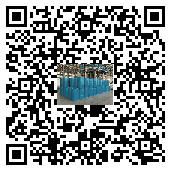Printing and dyeing penetrant: a magical additive that enhances the dyeing effect of textiles
In the colorful world of textiles, printing and dyeing penetrants play an indispensable role. They are like "catalysts" in the dyeing process, silently pushing the intimate contact between dyes and fibers, making textiles bloom with more brilliant colors. This article will reveal the application areas and miraculous effects of printing and dyeing penetrants for you.
1、 Definition and Classification of Printing and Dyeing Penetrating Agents
Printing and dyeing penetrants, as the name suggests, refer to a type of chemical that can help dyes penetrate better into the interior of fabric fibers. They are usually a type of surfactant with fixed hydrophilic and lipophilic groups that can be oriented on the surface of the solution, significantly reducing surface tension.
There are various types of penetrants for printing and dyeing, which can be divided into pre treatment penetrants, dyeing penetrants, printing penetrants, and post finishing penetrants according to the application process; According to the ionic type, it can be divided into non-ionic, anionic, and compound types. Different types of penetrants are suitable for different fiber types and dyeing processes, and can meet the diverse dyeing needs of textiles.
2、 The main function of printing and dyeing penetrant
Improving dye absorption rate: Printing and dyeing penetrants can disperse dye particles, accelerate the diffusion and penetration of dye molecules, and make the dye more fully in contact with fibers, thereby improving the dye absorption rate.
Improving dyeing uniformity: Penetrating agents can evenly distribute dyes, making dyeing more uniform, avoiding color differences and spots, and enhancing the aesthetics of textiles.
Optimize printing and dyeing process: Printing and dyeing penetrants can coordinate the entire printing and dyeing process, assist in adjusting water quality and pH value, reduce unnecessary processes and chemicals, and improve printing and dyeing efficiency and process benefits.
Enhancing color fastness: By increasing the permeability and adhesion of dyes, printing and dyeing penetrants help to enhance the color fastness of dyed fabrics, making them more washable, sun resistant, and wear-resistant.
3、 Application fields of printing and dyeing penetrants
Textile dyeing: Penetrating agents are widely used in the dyeing process of textiles such as cotton, linen, wool, silk, acetate filament, polyester, nylon, aramid, etc. Whether it is reactive dyes, dispersed dyes, or vat dyes, penetrants can significantly improve dyeing efficiency and process stability.
Textile printing: During the printing process, dye penetrants help dyes penetrate better into the fibers, making the printed patterns clearer, fuller, and more durable.
Post finishing of textiles: In the post finishing stage, penetrants can be used to improve the texture, glossiness, and wrinkle resistance of fabrics, enhancing their value and market competitiveness.
Other fields: In addition to the textile industry, printing and dyeing penetrants are widely used in industries such as papermaking, leather, coatings, and inks, playing a similar role in penetration and dispersion.
4、 Future Development Trends
With the rapid development of the textile industry and the continuous changes in consumer demand, printing and dyeing penetrants are moving towards a more environmentally friendly, efficient, and multifunctional direction. In the future, we will see more new penetrants with environmental advantages emerge, which will not only meet the needs of textile dyeing, but also pay more attention to environmental protection and harmless to human health.
epilogue
As an important auxiliary agent in the textile dyeing process, printing and dyeing penetrants play a crucial role in improving dye absorption, enhancing dyeing uniformity, and optimizing printing and dyeing processes. Their widespread application not only enhances the aesthetics and value of textiles, but also promotes the sustainable development and innovation of the textile industry. I believe that in the future, printing and dyeing penetrants will continue to bring us more surprises and possibilities.


